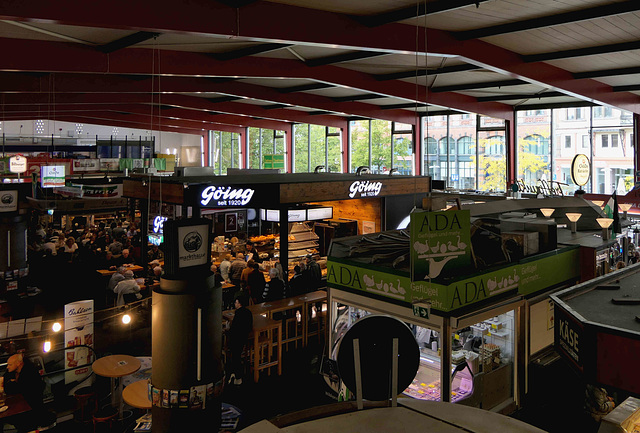Hannover - Rathsapotheke
Hannover - Aegidienkirche
Hannover - Aegidienkirche
Heraklion - Agios Minas Cathedral
Heraklion - Agios Minas Cathedral
Heraklion - Agios Minas Cathedral
Heraklion - Agios Minas Cathedral
Heraklion - Agia Ekaterini
Heraklion - Agia Ekaterini
Heraklion - Agia Ekaterini
Heraklion - Agia Ekaterini
Heraklion - Agia Ekaterini
Heraklion - Agia Ekaterini
Heraklion - Agia Ekaterini
Heraklion - Agia Ekaterini
Heraklion - Evangelismos
Heraklion
Heraklion - Agios Titos
Heraklion - Agios Titos
Heraklion - Agios Titos
Heraklion - Agios Titos
Heraklion - Venetian Loggia
Heraklion - Venetian Loggia
Hannover - Marktkirche
Hannover - Marktkirche
Hannover - Marktkirche (PiP)
Hannover - Landesmuseum
Hannover - Landesmuseum
Hannover - Landesmuseum
Hannover - Landesmuseum
Hannover - Landesmuseum
Hannover - Landesmuseum
Hannover - Landesmuseum
Hannover - Landesmuseum
Hannover - Landesmuseum
Hannover - Landesmuseum
Hannover - Landesmuseum
Hannover - Landesmuseum
Hannover - Landesmuseum
Hannover - Landesmuseum
Hannover - Landesmuseum
Hannover - Landesmuseum
Hannover - Landesmuseum
Hannover - Landesmuseum
Hannover - Landesmuseum
Location
Lat, Lng:
You can copy the above to your favourite mapping app.
Address: unknown
You can copy the above to your favourite mapping app.
Address: unknown
See also...
Keywords
Authorizations, license
-
Visible by: Everyone -
All rights reserved
-
7 visits
Hannover - Markthalle


With more than 500.000 inhabitants Hannover is the capital and largest city of the German state of Lower Saxony.
Hannover was founded in medieval times on the east bank of the River Leine. It was a small village of ferrymen and fishermen. It became a comparatively large town in the 13th century, receiving town privileges in 1241, owing to its position at natural crossroads It was connected to the Hanseatic city of Bremen by the Leine and was situated north-west of the Harz mountains so that east-west traffic passed through it.
Between 1714 and 1837 three kings of Great Britain were concurrently also Electoral Princes of Hanover.
As an important railway and road junction and production centre, Hannover was a major target for strategic bombing during WW II. More than 90% of the city centre was destroyed in a total of 88 bombing raids. So today Hannover lacks it´s medieval heart.
Originally, agricultural products in Hanover were brought into the city by local farmers and sold at public markets. At the end of the 19th century, increased hygiene standards led to calls for the regulation of open markets. The population of Hanover, which was elevated to city status in 1875 with over 100,000 inhabitants, grew, and so the city began building a market hall.
The first market hall was an iron and glass structure with brick side walls. It was 84 meters long, 48 meters wide, and about 20 meters high. When it opened in 1892, the Hanover Market Hall was the largest steel and glass building in the German Empire.
The hall was destroyed during World War II. The cellars with the cold storage facilities survived. After the war, market operations continued in the destroyed hall with temporary stalls and booths.
A new market hall was built in 1954 on the site of the destroyed market hall. It was a purely functional building. As in many market halls nowadays there are also many stalls offering hot meals.
Hannover was founded in medieval times on the east bank of the River Leine. It was a small village of ferrymen and fishermen. It became a comparatively large town in the 13th century, receiving town privileges in 1241, owing to its position at natural crossroads It was connected to the Hanseatic city of Bremen by the Leine and was situated north-west of the Harz mountains so that east-west traffic passed through it.
Between 1714 and 1837 three kings of Great Britain were concurrently also Electoral Princes of Hanover.
As an important railway and road junction and production centre, Hannover was a major target for strategic bombing during WW II. More than 90% of the city centre was destroyed in a total of 88 bombing raids. So today Hannover lacks it´s medieval heart.
Originally, agricultural products in Hanover were brought into the city by local farmers and sold at public markets. At the end of the 19th century, increased hygiene standards led to calls for the regulation of open markets. The population of Hanover, which was elevated to city status in 1875 with over 100,000 inhabitants, grew, and so the city began building a market hall.
The first market hall was an iron and glass structure with brick side walls. It was 84 meters long, 48 meters wide, and about 20 meters high. When it opened in 1892, the Hanover Market Hall was the largest steel and glass building in the German Empire.
The hall was destroyed during World War II. The cellars with the cold storage facilities survived. After the war, market operations continued in the destroyed hall with temporary stalls and booths.
A new market hall was built in 1954 on the site of the destroyed market hall. It was a purely functional building. As in many market halls nowadays there are also many stalls offering hot meals.
- Keyboard shortcuts:
Jump to top
RSS feed- Latest comments - Subscribe to the comment feeds of this photo
- ipernity © 2007-2025
- Help & Contact
|
Club news
|
About ipernity
|
History |
ipernity Club & Prices |
Guide of good conduct
Donate | Group guidelines | Privacy policy | Terms of use | Statutes | In memoria -
Facebook
Twitter

Sign-in to write a comment.